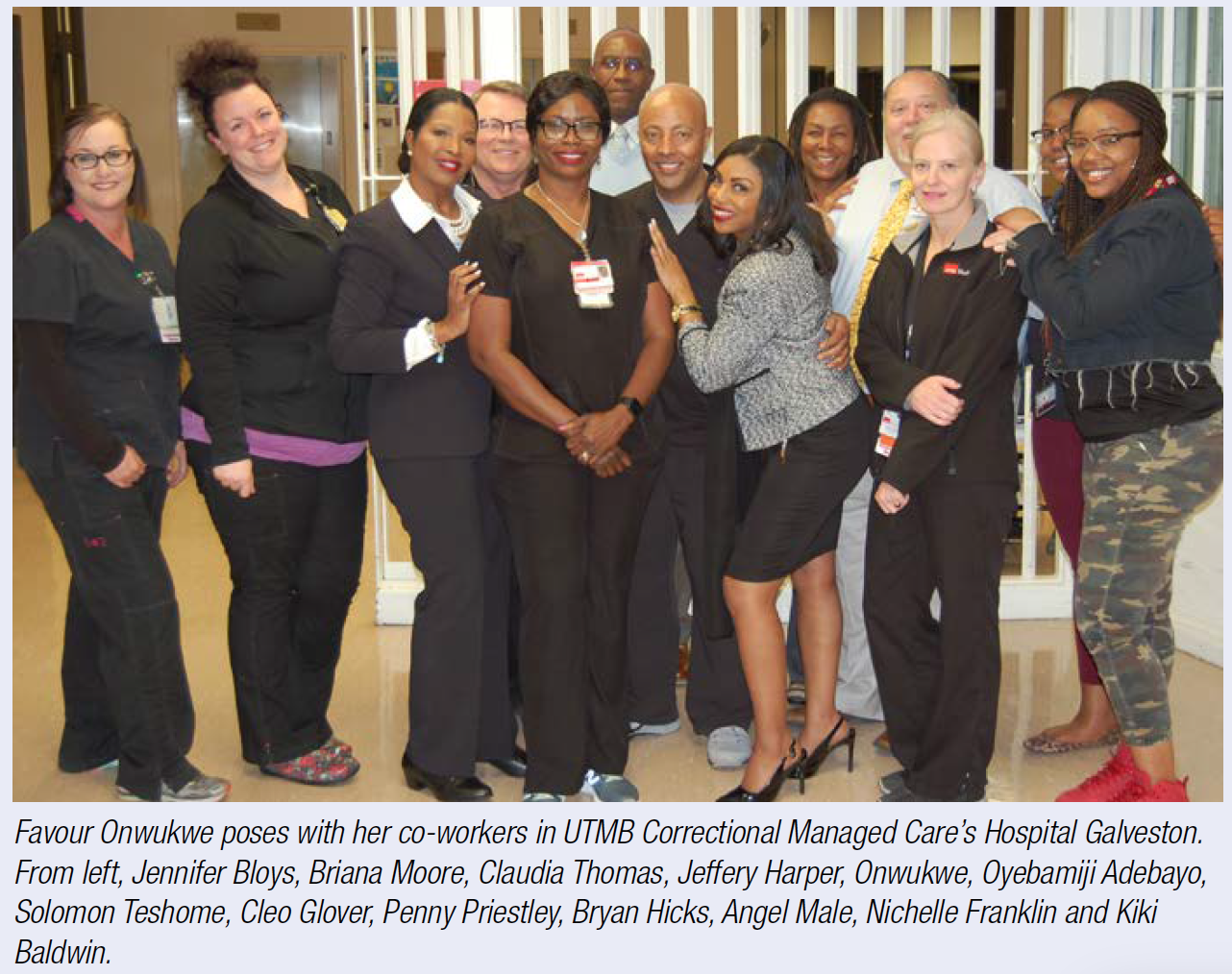
FOR FAVOUR ONWUKWE, HER COMMITMENT TO WORKING AS A NURSE at Hospital Galveston for more than 14 years comes down to the connection she has with her patients.
“When you work in the Texas Department of Criminal Justice, you become a part of your patient’s family,” said Onwukwe, a nurse clinician IV in the Hospital Galveston Telemetry Unit. “You see them when they are healthy and you may be the last person to hold their hands on their last day. To us, our patients aren’t offenders. When you have that in the back of your mind, you are going to give them the best care that you can.”
Onwukwe’s attitude toward caring for her patients is emblematic of the way UTMB’s Correctional Managed Care’s health care professionals overall approach every aspect of their roles, said Dr. Olugbenga Ojo, chief medical officer and chief physician executive for TDCJ’s hospitals and clinics at UTMB.
Ojo, who highlighted CMC’s numerous contributions to delivering exemplary care as part of his Best Care Lunch & Learn presentation on March 8, said UTMB provides constitutionally mandated levels of care to more than two-thirds of the state’s incarcerated offenders.
“There are 145,000 patients incarcerated in the state of Texas and UTMB takes care of 120,000 of those patients,” Ojo said, adding that Texas Tech is contracted by TDCJ to handle the remaining 25,000 patients. “Everything that happens to our patients is statutorily mandated, meaning they must have access. In fact, inmates are the only Americans who are guaranteed access to health care in this country today. So, it behooves us to give them high-quality care while keeping costs down.”
More than 3,300 CMC staff handle nearly 10 million medical, dental and mental health patient encounters at prison units scattered all across the state of Texas and at Hospital Galveston on UTMB’s Galveston Campus, the only maximum-security prison hospital on the campus of a major U.S. academic medical center.
In 2017, the state changed the way it reimburses UTMB-CMC for the care it provides to patients, from a cost-based approach to a diagnosis-related group or DRG, Ojo said.
“DRG is a payment classification system that pays for everything from admission through discharge,” he said. “But it only pays a fixed cost, regardless of how much we incur in providing that care.”
Ojo said the change in reimbursement methodology caused UTMB-CMC to examine operations at Hospital Galveston, most notably by focusing on quality of care related to six areas of emphasis: hospital acquired conditions/patient safety indicators (HAC/ PSI); mortality, patient experience, length of stay and 30-day readmissions.
By focusing on Progression of Care Rounds (POCR) to address avoidable patient days, as well as adding infirmary beds, conducting length-of-stay meetings twice a week and implementing Patient-Centered Resource Optimization Program (PROP) initiatives for patients with HIV and cirrhosis, UTMB-CMC was able to significantly trim length of stay at Hospital Galveston.
“At the end of FY18, our average length of stay dropped to 6.94, a 17 percent decrease,” Ojo said. “That’s unheard of, but it came about by focusing on the right issues.”
UTMB-CMC took the same analytical approach with the other quality metrics, and each area showed improvement throughout the fiscal year, Ojo said. “It has a taken a lot of teamwork, education, buy-in and engagement with everyone involved to make this happen,” he said.
Dr. Owen Murray, vice president for UTMB Offender Care Services, said inmate care in Texas is a model that other states are working to emulate.
“UTMB providing this level of care works in the state’s best interests,” Murray said. “Good care and good outcomes lead to better costs, and we should be able to document a value proposition to the state, both clinically and fiscally. We’ve had a long history of care here. We have 3,000 employees taking care of these patients 24/7 out in our facilities, and they do a very good job under difficult circumstances.”
Onwukwe, the nurse in a Hospital Galveston facility known as 7A, is one of those.
“Doing this job, it has to be a calling,” she said. “As nurses, we are taught to be compassionate so when I’m coming to work, I’m not coming to take care of offenders. I’m coming to take care of my patients.” n
To watch Dr. Ojo’s or any of the other Best Care Lunch & Learn presentations, visit https://intranet.utmb.edu/best-care/best-care-lunch-learns-2019.